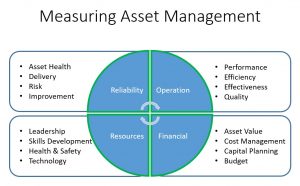 How many of you out there have uprooted your organization and implemented an expensive Asset Management software package (like Maximo, SAP, or others), trained hundreds of users, and constantly feed data to like a zookeeper feeding a hungry lion only to realized that you still cannot get anything actionable out of it?
How many of you out there have uprooted your organization and implemented an expensive Asset Management software package (like Maximo, SAP, or others), trained hundreds of users, and constantly feed data to like a zookeeper feeding a hungry lion only to realized that you still cannot get anything actionable out of it?
In my career of nearly 28 years in the engineering, maintenance and asset management markets, many of which I spent providing technology solutions for business, I have seen countless organizations committed to “world class” asset management who use these systems yet still struggle. They select, purchase, and mobilize to deploy technology tools but can’t seem to get that key information out they need to make reasonable change. Studies have suggested that the cost of this inability to improve costs them, you, a collective tens if not hundreds of millions of dollars in bottom line savings, cost avoidance, lost capacity, and unnecessary/untimely investment.
Let me try to describe the issue in words so we can do something about it:
THE PROBLEM: You have this robust system but it hasn’t become the “tool” it was promised to be to get useful information from to help you do your job and improve your business.
I routinely ask my clients why can’t they get the information they need out of their system. Their top responses include,
- It wasn’t configured with the end game, our desired needs in mind
- We don’t have useful reports and it’s hard to get information out
- We didn’t really know what we wanted when we started
- Our people don’t use it correctly, don’t put the right data into it or the data is bad
- We don’t have the right people and can’t afford consultants to do it
- We’re too busy managing work orders and fighting fires to do anything else
The list could go on and on…
Addressing this challenge can be daunting. If you are in the group who chooses to throw on your proverbial work boots and decide to step up to the plate to address it, where do you start? For me, being an engineer I usually try to revert to my experience and training. If that doesn’t work I go see a therapist…
Joking aside, I have found that in the spirit of KISS (not the band, the Keep It Simple Stupid philosophy) the best solutions are those that are intuitive to the masses while providing specific and understandable information that can be acted on. In this case you have found that you have all of this data but don’t know what to do with it.
Here, as a friend and colleague of mine likes to say, is the “Secret Sauce”:
THE SOLUTION: Categorize your core strategic drivers, organize what elements of your business should to be measured into these drivers, and deploy sensible metrics that provide you timely information that will help you make decisions and invoke change needed for improvement.
That’s all!
Wouldn’t it be wonderful if you had a set of metrics based on all of this perceived phantom data that could give you piece of mind to take the right action at the right time to improve Reliability, Operation, Resource Management, and Cost Control? Furthermore, how nice would it be to know where to focus your limited resources on process improvement, asset renewal, or RCM analysis to improve sustainment strategies?
The answer to this puzzle begins with categorizing those strategic drivers in your organization that matter to you and the business. I have found that they typically fit into one of four areas. Next, you can define those business elements that fit within those four groups. Some of them include Service Delivery, Asset Health, Operations/Maintenance Performance, and Cost Management.

For example, if you know which assets are causing you the most trouble, or better yet which ones will cause you trouble in the near or distant future, you can take the right action at the right time to address issues with those assets thus lessening the impact of degraded operation or failure.
Once the metrics are defined you then assemble the final pieces:
- What the output should look like
- How it should be used, what decision or action they facilitate
- Who should use it
- Where to get the data
Your friendly business analyst or IT person should now have all they need to do the keyboard pounding and techie stuff necessary to create and deploy it for you.
Understand that Asset Management, Reliability, and Maintenance is not a perfect science. We’d need to be locked in an asylum if we truly thought that we can make the perfect decision and do the exact perfect action 100% of the time. Anyone who has spent any time in the field can attest to that. However, it is definitely possible to use the information you most likely already have in your Asset Management System to get you much closer than where you are now. Getting started is the key, once you get going the sustained effort falls under that heading you see in all of those expensive industry self-help books, Continuous Improvement.
Do it right and you may then experience a variation of the Peter Drucker quote,
You can now improve it, because you’re now measuring it.


0 Comments